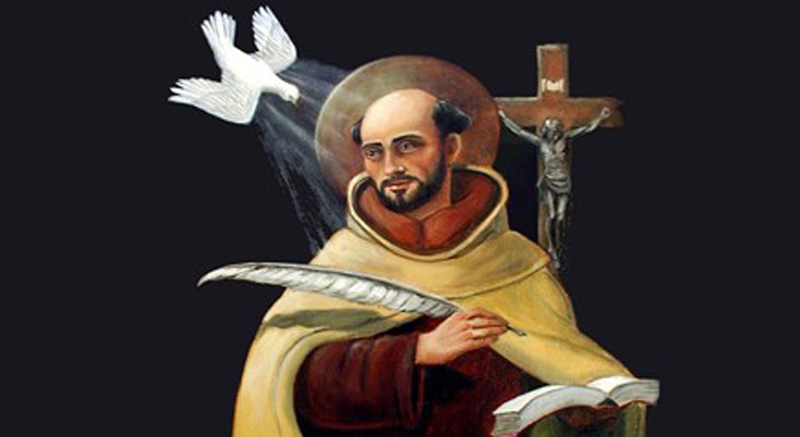(1542-1591)
St. John was born Juan de Yepes y Alvarez, in Fontiveros, Avila, Spain in 1542. His father was employed by wealthy family members as an accountant, but they disowned him when he married a poor woman from the lower class.
As a result of his family’s poverty, John’s family suffered greatly. His father died when he was 3, and his older brother, Luis died two years after that, likely because of malnutrition. John’s mother eventually found work weaving which helped her to feed her family.
As a child, John was sent to a boarding school for poor and orphaned children. He was given a religious education, which led to him choosing to follow a religious path. As he grew older, he went to work in a hospital while attending a Jesuit school. In 1563, he was able to join the Carmelite Order and took the name, “John of St. Matthias.” He made vows the following year and was sent to the university in Salamanca to study theology and philosophy.
He became an expert in the Bible and translated the “Song of Songs” into Spanish, an act which was controversial since the church forbade the translation of the Bible from Latin — a measure to protect the original meanings in the scripture.
John became a priest in 1567 and considered joining the Carthusian Order where monks lived cloistered in individual cells. He encountered the charismatic Carmelite nun Theresa of Avila who asked John to follow her and her strict order, the Discalced (shoeless) Carmelites.
Their mutual admiration would lead Theresa, in 1572, to ask John to join her in Avila to be her confessor. While there, he had a vision of Christ and made a drawing that remains to this day called “Christ from Above.” The little drawing shows Christ on the cross, looking down on him from above. The image has been preserved for centuries.
In 1575, a rift in the Carmelite order arose between the Discalced Carmelites and the ordinary Carmelites, over reform. The Carmelites wanted to return to a stricter rule, but the others found that unacceptable. The intervention of the Vatican and the political intrigue of the Spanish court led to dramatic, even violent disagreement between the Carmelites.
John was kidnapped and brought to trial in Toledo, where he was thrown in prison in a cell so small, he could barely lie down. He was fed only bread and water, and occasional scraps of salt fish. Each week he was taken into public and lashed, then returned to his cell. His only luxuries were a prayer book and an oil lamp to read it by. To pass the time he wrote poems on paper that was smuggled to him by the friar charged with guarding his cell.
After nine months, John managed to pry his cell door from its hinges and escape. He joined Teresa’s nuns in Toledo and spent six weeks in the hospital to recover. In 1579, he was sent to the town of Baeza to be rector of a new college and to support the Discalced Carmelites in Andalusia. During the last few years of his life, John traveled and established new houses across Spain. In 1591, John became ill with a skin condition that resulted in an infection. He died on Dec. 14, 1591; John of the Cross died.
John became known as a remarkable and influential poet, especially following his death. He has been cited as an influence on many poets, mystics, and artists, even Salvador Dali.
Adapted by A.J. Valentini from: Online, C. (n.d.-f). St. John of the Cross – Saints & Angels. Catholic Online. Retrieved Dec. 7, 2020, from https://www.catholic.org/saints/saint.php?saint_id=65
